Recall that the Grattan Institute lobbied hard against domestic gas reservation in 2013 when the gas export terminals were being built in Gladstone.
Grattan’s lobbying helped wreck Australian energy policy for decades, costing East Coast Australians billions of dollars in high gas and electricity prices:

Grattan lobbies hard against East Coast gas reservation in 2013

Grattan calls for end to WA gas reservation in 2013
The Grattan Institute’s energy recommendations obviously aged like milk.
Without domestic gas reservation, East Coast gas users have experienced hyper-inflation in both gas and electricity prices, fuelling the nation’s inflation, sending manufacturers broke, and worsening cost of living and pressures.
By contrast, Western Australians, who ignored Grattan’s lobbying, have enjoyed some of the world’s lowest gas and electricity prices.
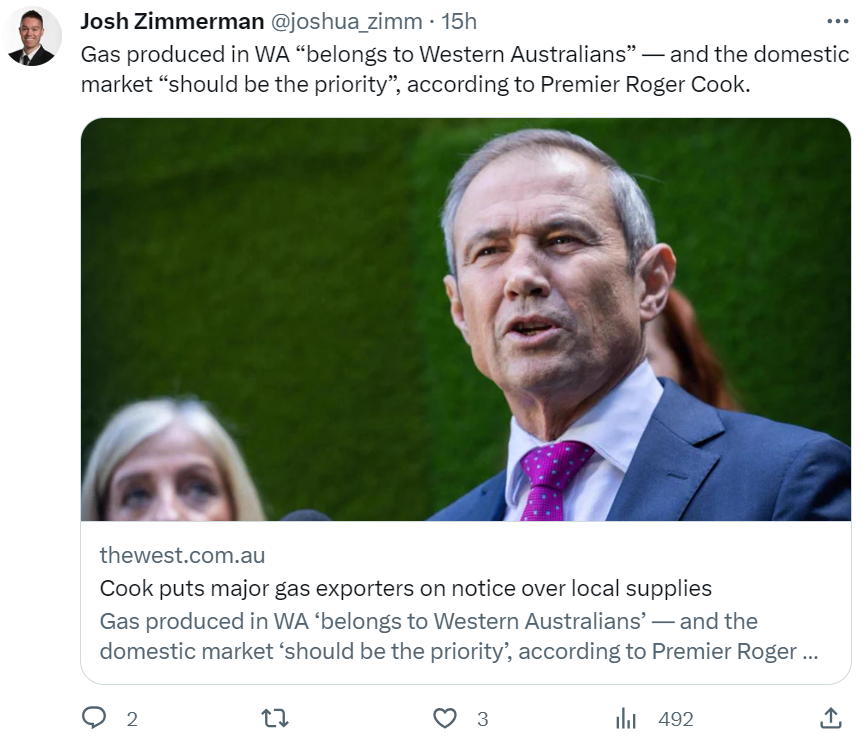
The Grattan Institute is now busy spinning fairy tales that Peter Dutton’s slightly lower permanent migrant intake would cost taxpayers tens of billions of dollars in lost budget revenue.

“Trent Wiltshire, the deputy director of migration and labour markets at the Grattan Institute, told Guardian Australia that, although reducing the permanent skilled intake would not have a big impact in the short term, the longer term benefit of skilled migration was “huge”, including migrants improving Australia’s productivity, filling skills shortages and paying more taxes”.
“Based on Dutton’s claim on Monday that two-thirds of the permanent intake would be via skilled visas, Wiltshire estimated that over the forward estimates (to 2027-28) the long-term cost to government budgets would be $34bn over those migrants’ lifetimes in Australia”.
Trent Wiltshire’s estimates are as stupid as they are myopic.
The federal government collects 82% of the nation’s tax revenue and derives all of the benefits from immigration via increased personal and company taxes.
However, the Grattan Institute always conveniently ignores that state governments, who are primarily responsible for infrastructure and service delivery, are left picking up the cost of immigration, which has driven them deep into debt:


Dr Jane O’Sullivan from the University of Queensland estimates that the public infrastructure bill, spread across federal, state and local governments, is in the order of $130,000 per new resident. There are also extra costs imposed on residents (e.g. toll fees and user charges). These cost savings from lower immigration are conveniently ignored by Grattan.
Any resident living in one of our major cities knows that they have been left worse off as housing, infrastructure, and services have failed to keep pace with two decades of strong population growth.
These residents have also suffered from higher cost-of-living as cash-starved state governments have privatised existing and new infrastructure, resulting in higher user pay charges.
Having fewer migrants arrive would obviate the need to build so much infrastructure, hospitals, schools, water supplies, public housing, etc.
Thus, there are savings to both governments and households that come with the loss of tax revenue from having less migration.
Then there are the negative productivity impacts of running an immigration policy well in excess of business investment, infrastructure investment, and housing supply.
Decades of excessive immigration in Australia have resulted in capital shallowing, dragging down Australia’s productivity:

This is a key reason why Australia’s productivity and per capita GDP growth have been so poor and why everything has become more congested.
Twenty years of high immigration, which has seen Australia’s population balloon by 8.2 million people this century, have also not solved skills shortages and have arguably made them worse.
For 20 years, Australia has run a disjointed ‘whack a mole’ migration system whereby we have tried to plug skills gaps in one area only to create shortages in others.
Let’s also not forget that most of Grattan’s beloved ‘skilled migrants’ actually work in lower-skilled jobs.
For example, the Migration Review showed that 51% of international university graduates with bachelor’s degrees were working in unskilled jobs three years after graduation:
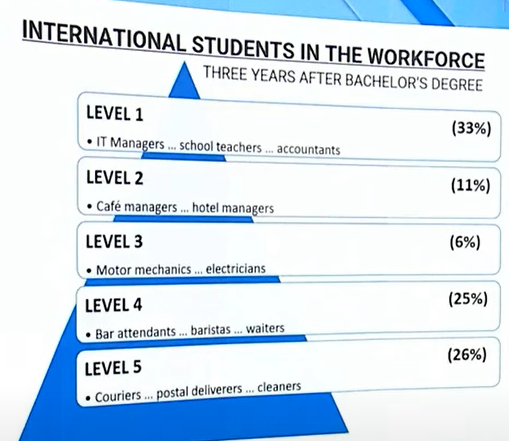
Source: Migration Review (2023)
International student graduates earn significantly less than local born graduates and have worse labour market outcomes:
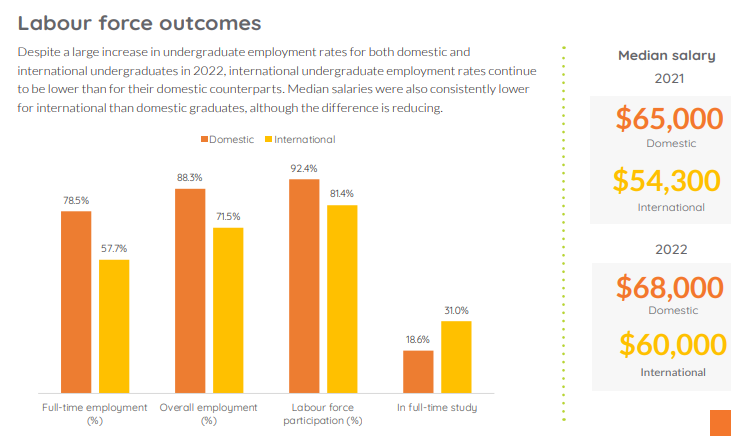
Source: Graduate Outcomes Survey
‘Skilled’ migrants get paid over 10% less than local workers:

For example, 60% of Australian engineers are foreign born, yet nearly half of them work in low-skilled jobs unrelated to engineering, such as driving Uber.
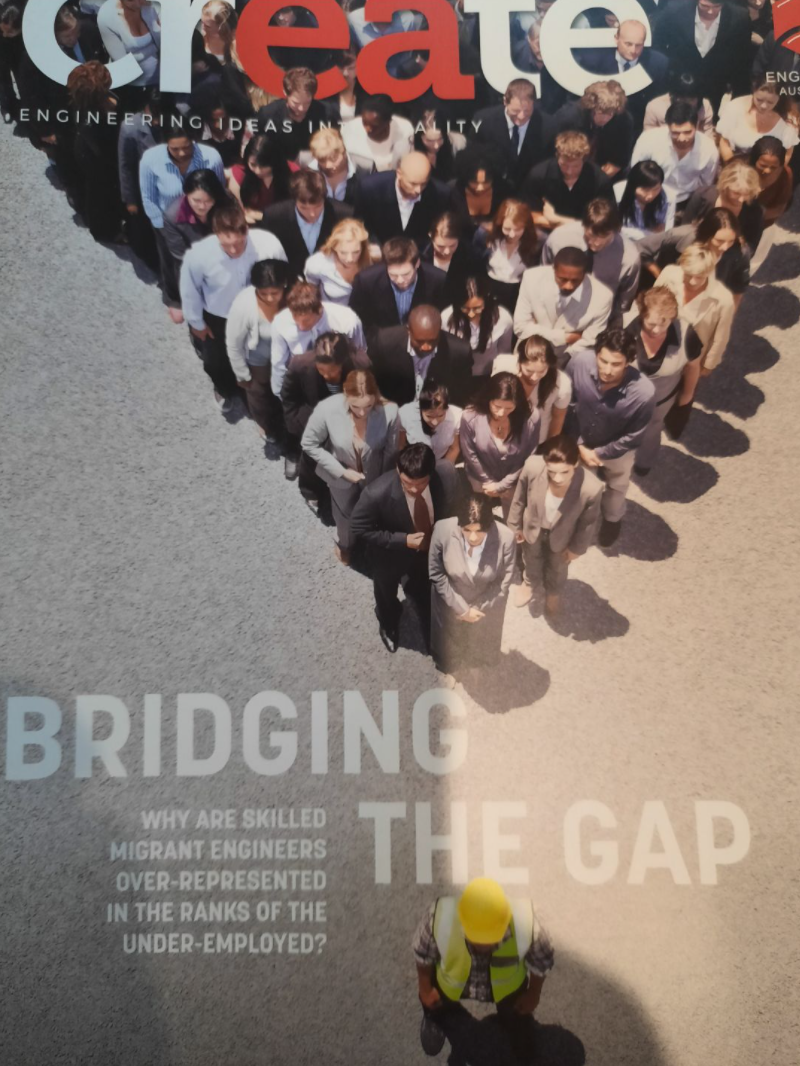
Cover of Engineering Magazine, “Create” in November 2021.
Moreover, as Grattan itself has pointed out, migrants work in construction at a substantially lower rate than Australian-born workers:

Therefore, Australia’s migration system has directly worsened the housing crisis by pumping demand and not contributing to supply.
In short, Australia needs a much smaller, highly skilled, and highly paid migration system. This would boost economic benefits for Australians.
We should always remember that Grattan’s immigration “research” and work program have been funded by the pro-Big Australia Scanlon Foundation, which was founded by real estate entrepreneur and rich lister Peter Scanlon:
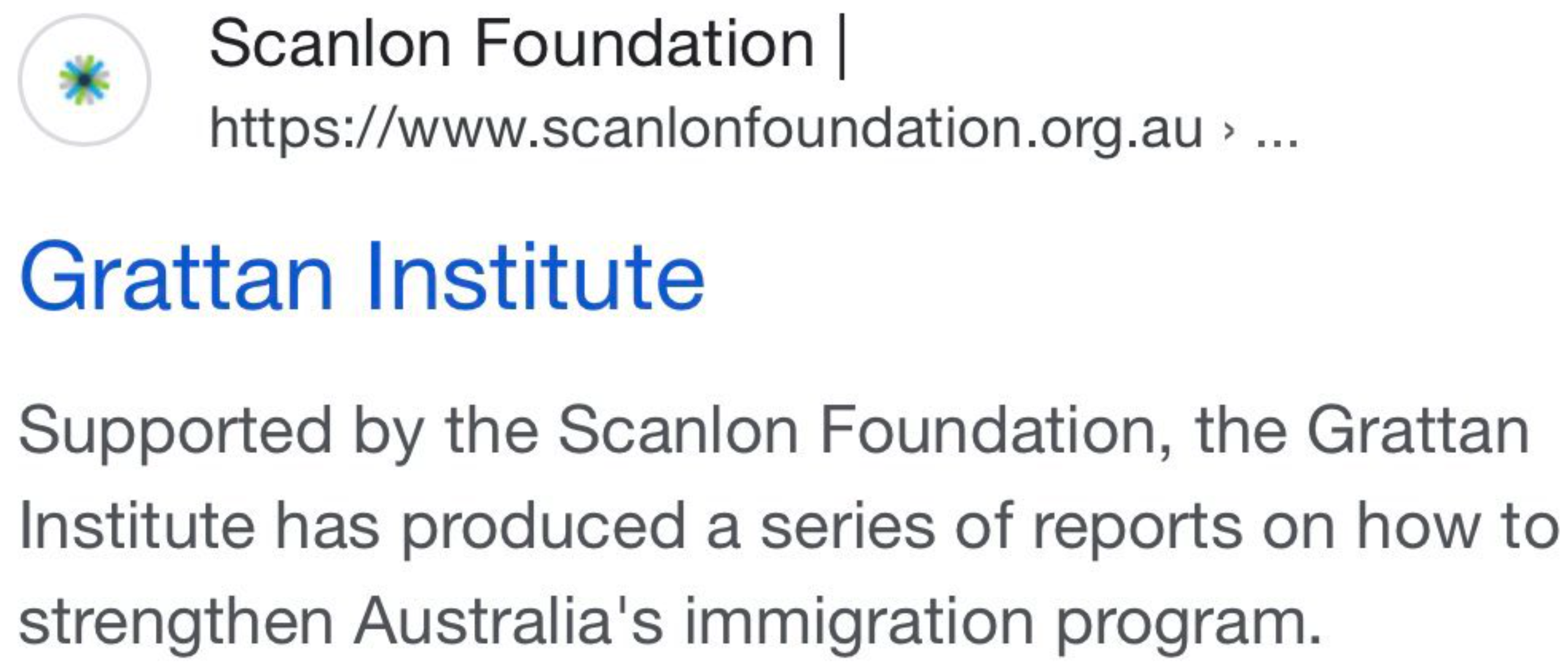
As John Masanauskas of the Herald-Sun explained in 2009 (link no longer active):
MAJOR investor and former Elders executive Peter Scanlon hardly blinks when asked if his conspicuous support for a bigger population is also good for business.
Mr Scanlon, whose family wealth is estimated to be more than $600 million, has set up a foundation with the aim to create a larger and socially cohesive Australia.
It also happens that Mr Scanlon has extensive property development interests, which clearly benefit from immigration-fuelled high population growth.
“My primary driver in (setting up the foundation) is if we don’t have growth we are going to lose all our youth because the world is looking to train people around the world,” he explains.
“Instead of having stagnant growth, we’re going to have a serious decline.”
Mr Scanlon believes that governments aren’t doing enough to sell the benefits of a bigger population so he has put his money where his mouth is…
Presumably, this financial backing from the Scanlon Foundation is why the Grattan Institute constantly spouts the merits of a ‘strong’ migration program while downplaying any negative consequences.
The Grattan Institute has also been housed by the University of Melbourne, which has a vested interest in maintaining high levels of immigration (most notably via international students):
“The University of Melbourne contributes support-in-kind, most importantly by housing us in a building just off Grattan Street in Carlton, opposite the University”.
Always follow the money.

